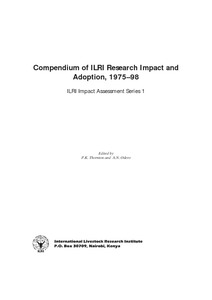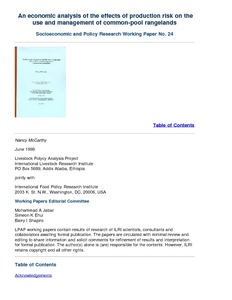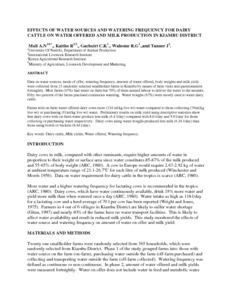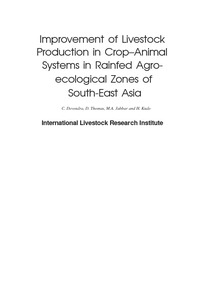Location
Vision, mission and strategy
ILRI's strategy 2013-2022 was approved in December 2012. It emerged from a wide processof consultation and engagement.
ILRI envisions... a world where all people have access to enough food and livelihood options to fulfil their potential.
ILRI’s mission is... to improve food and nutritional security and to reduce poverty in developing countries through research for efficient, safe and sustainable use of livestock—ensuring better lives through livestock.
ILRI’s three strategic objectives are:
- with partners, to develop, test, adapt and promote science-based practices that—being sustainable and scalable—achieve better lives through livestock.
- with partners,to provide compelling scientific evidence in ways that persuade decision-makers—from farms to boardrooms and parliaments—that smarter policies and bigger livestock investments can deliver significant socio-economic, health and environmental dividends to both poor nations and households.
- with partners,to increase capacity among ILRI’s key stakeholders to make better use of livestock science and investments for better lives through livestock.
This is ILRI’s second ten-year strategy. It incorporates a number of changes, many based on learning from the previous strategy (2000–2010, initially produced in 2000 and modified in 2002), an interim strategy (2011–2012) and an assessment of the external and internal environments in which the institute operates.
Members:
Resources
Displaying 941 - 945 of 1152Compendium of ILRI research impacts and adoption, 1975-1998
This document lists and summarises studies by ILRI (International Livestock Research Institute) and its predecessors, ILCA (International Livestock Centre for Africa) and ILRAD (International Laboratory for Research on Animal Diseases), on the adoption and impact of their research output. It will be updated regularly as old activities are completed and new ones are started.
Animal traction and the potential for use of dairy cows in the Ethiopian highlands
This paper presents and discusses the results of the IAR/ILRI (Institute of Agricultural Research/International Livestock Research Institute) Dairy-Draft Project study which was carried out to examine the performance of F1, Boran X Friesian crossbred cows both in terms of traction and milk, to examine the effects of crossbred dairy cows on food security, to quantify the economic returns of crossbred dairy cows on food security, to quantify the economic returns of crossbred dairy cows used for both traction and milk versus those used for milk production only, and to identify factors affectin
An economic analysis of the effects of production risk on the use and management of common-pool rangelands
Effects of water sources and watering frequency for dairy cattle on water offered and milk production in Kiambu District
Data on water sources, mode of offer, watering frequency, amount of water offered, body weights and milk yield were collected from 21 randomly selected smallholder farms in Kiambu by means of farm visits and questionnaires fortnightly. Most farms (67%) had water on-farm but 76% of them needed labour to deliver the water to the animals. Fifty two percent of the farms practised continuous watering. Water troughs (67%) were mostly used to water dairy cattle.






